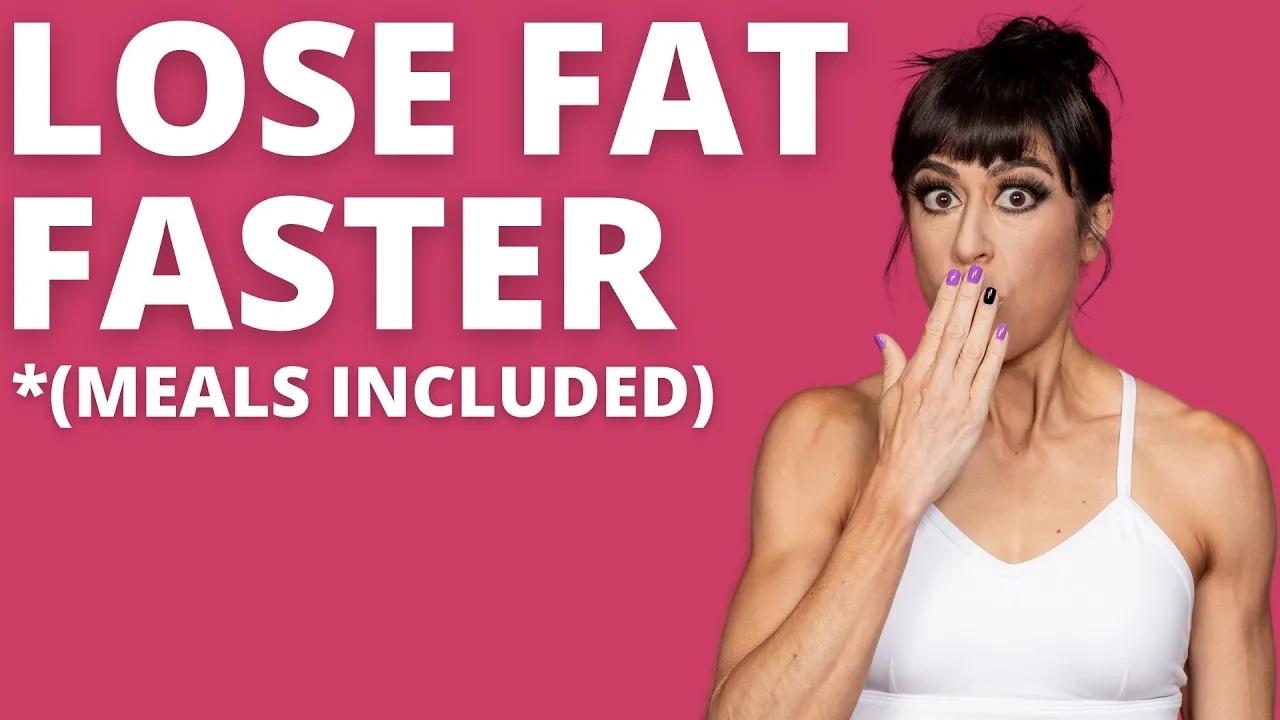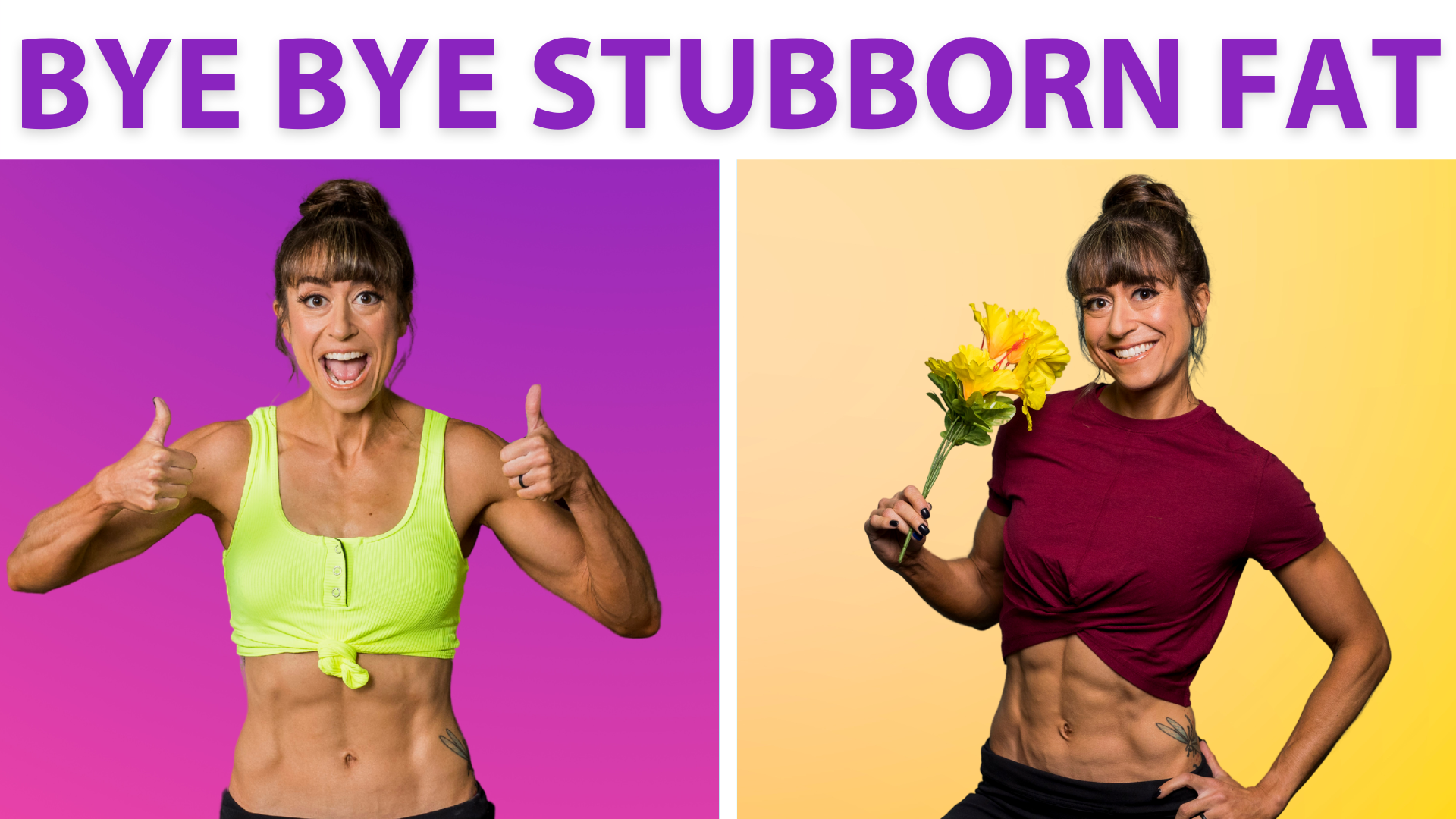
Can’t Lose Fat? Here’s The #1 Reason Why
“But I was good all week!”
Have you thought this after stepping on the scale Sunday morning to weigh in only to be disappointed by the result?
Many of us have….we feel like we’ve worked hard all week to not see the results we feel we deserve!
That’s why I wanted to share the number one reason you aren’t seeing the weight loss results you want…
Which is honestly…you weren’t as “good” as you thought you were.
Now before you give an angry look and click off this video saying I’m wrong…
I want to go over the hidden inconsistencies I often see in clients’ diets that sabotage their weight loss results.
But I also do just want to first mention…
The scale doesn’t show us the full picture!

Just because you didn’t lose that week doesn’t mean results aren’t building.
The scale just shows us our weight in that given moment. But our weight isn’t just fat and muscle.
It’s glycogen being stored, water weight, inflammation, poop…
So a hard workout the day before, a little more sodium with dinner or even eating slightly later than usual could all impact our weight the next day.
We may even have seen losses had we weighed the day before a hard workout that made us sore while seeing increases on our weigh in day.
That’s why we never just want to jump ship because of the scale not immediately showing us the results we want.
It’s why taking pictures and body measurements are so key.
Because the scale also doesn’t show us body recomp happening at times.
If you gain 2lbs of muscle and lose 1lbs of fat, you’re going to gain on the scale while looking leaner.
So it’s key we aren’t just only basing results off changes on the scale.
We also need to recognize that progress is never linear.
While we often hear it is possible to lose 1-2lbs a week, this doesn’t mean it is realistic for us or that we will achieve this every single week.
It often means that when you look at averages over time, that it is a realistic, but challenging rate at which you COULD lose.
But week to week, may vary, including weeks where you actually gain a pound before losing 3.
We also have to remember that while something is “realistic” it doesn’t mean it will happen for us.
How long we’ve had the weight on, how much we have to lose, how aggressive we are being with our plan, even our age and training and dieting experience can all impact how fast is realistic for us to see results.
So as frustrating as it can be, you need to track progress in multiple different ways and also step back to assess trends over time.
And if you aren’t seeing results snowball, consider whether or not you’re actually being as “good” as you think or if these 5 underlying issues are popping up…
Issue #1: Weekend Eating Blowing Your Calorie Deficit
The “but I was good all week” feeling comes from us working really hard Monday through Friday afternoon.
We’re precise in our macros. Really cutting out foods and dialing in our calories.
We’re meal prepping.
We feel like we’re working really hard.
Then on Friday night we feel like we DESERVE that cocktail.
Those chips and guacamole.
On Saturday morning, we wake up feeling a bit lazy and wanting to relax.
And after indulging the night before, we find it easier to want to not eat according to our plan that day as well.
Which often spills into starting over Monday…
We think, “Well it’s still only a couple of day off plan while I was good all week. 5 days vs 2 IS consistency.”
But what we don’t realize is how much even those couple of days can throw us out of a deficit and really impact our weekly macros.
Especially because often we don’t log those days to see their impact.
But it’s easy for meals out, extra serving of dessert to create a calorie surplus over those weekend days that destroys our deficit from the week, especially if we are trying to create a smaller deficit to feel energized and protect our lean muscle mass.
Those weekend meals are also often carb and fat heavy and pretty low on protein.
This can dramatically change the macro ratio we are actually hitting over the week.
It’s why we can feel like we are working so hard, being so good, and overall consistent, yet not seeing those results snowball.
It’s why, starting out, it can be good to track EVERYTHING.
That way you truly know what your weeks and even months are averaging out to to be able to adjust accordingly.
Maybe it does mean adjusting your macro or calorie goals to slightly accommodate different habits on the weekends.
Or maybe it means finding ways to make more macro-friendly versions of the weekend meals you usually enjoy.
But so often we just aren’t aware of how much of an impact a couple of days can have on our results!
Consistency isn’t just the number of days but the impact of each day on the total!
Issue #2: Having “Free” Calories.
I know many popular diets say you don’t have to log certain things…like you can only track net carbs or not log certain sauces, fruits or vegetables.
And over time you may not log certain things because you know the calorie impact for you is low.
But the more you don’t log, the more calories can be adding up that you aren’t aware of.
The more you don’t have fully accurate data to work off of and make changes from.
Plus, it goes back to MINDSET.
Excusing not logging certain things, makes it easier to not log other little extras!
So no matter how minimal the calories may be, or even the argument that we don’t actually absorb the calories say from fiber,we should log everything to start when we are wanting to reach a goal as fast as possible.
When it comes to veggies, often people argue against logging them because they are very low in calories.
But most of the time we aren’t eating them plain.
Too often the sauces or oils we put on them DO have calories that add up on top of the calories from the veggies themselves!
And when it comes to tracking only “net carbs,” we often only make this excuse to be able to consume MORE CARBS.
While tracking net carbs may be key for specific health concerns, for weight loss, don’t subtract fiber.
When you set your calorie intake and deficit, you are assuming that you ARE eating foods with fiber.
You aren’t creating that deficit planning to eat no fiber!
So counting only net carbs can throw off the numbers you are actually hitting.
As painful as it is to start, LOG EVERYTHING!
What gets measured, gets managed!
Issue #3: Not Logging Bites, Licks And Nibbles.
This goes back to logging everything to start as these small little things add up over the day and weeks.
A couple of nuts or crackers here or there, the bite of leftover food off a kid’s plate…These things really add up.
And the less we are aware of them, the less we hold ourselves accountable for them, the more we tend to do them.
By pushing ourselves to log everything, we can often break patterns of mindless snacking. Snacking out of boredom even or stress.
And we can start focusing on fueling better. We can change even our relationship with food.
But focus on being conscious of your tendency to take little things throughout the day.
Make an effort to log them and be accountable.
You may find you then stop this pattern OR at least know the actual calories you’re consuming.
And you may be surprised by how much those little things have added up to an extra couple hundred of calories over the week on top of other habits throwing you out of the calorie deficit you thought you were consuming!
Issue #4: Not Truly Measuring
Our portion sizes easily get distorted.
How hungry we are, the size of the full portion served at a restaurant, how much we want it, how stressed or tired we are…
So many things impact what looks like a portion to us.
And it is so easy to let emotions lead to you scooping out a little bit extra of that peanut butter than you know is right!
Even the size of what you’re adding an ingredient to can impact how we see the portion.
A bigger piece of toast can make a serving of peanut butter look oh so pathetic!
That’s why, especially as we are really learning what portions we need to fuel and reach our goals, we need to get accurate measurements of everything we eat.
Tedious, boring, frustrating? YUP.
But this is the way you can really learn how distorted your portions may have been!
And this is the way you see results as efficiently as possible.
It’s just like baking a cookie…A little too much or too little of an ingredient can dramatically impact how ooey gooey or crispy that cookie is!
You don’t want to just wing it and hope when you’re craving those cookies! You weigh and measure everything so they come out exactly perfect.
This is exactly why you want to measure everything.
Results require a recipe. Help yourself know exactly what you need!
Whether you use measuring cups or a scale, weigh and measure everything, even saving recipes or meals to reuse quickly in the future.
Issue #5: Not Entering Ingredients.
A common excuse people make for not tracking everything is that they cook from scratch at home. Which is actually a funny excuse as cooking from scratch makes it EASIER to log everything than eating out.
You know exactly what you included and can measure out everything to log each ingredient accurately!
Too often we make a lasagna and simply select “lasagna” in the food tracker.
But we don’t know if that recipe was the same as ours. Or even if another person entered it manually and the macros and calories are correct.
Whenever possible, create your own recipes and meals in your food tracker, entering ingredients and portions.
This gives you the most accurate numbers to make changes off of!
And when you eat out, do your best to find something close to what you got.
Even check restaurant websites for nutritional information as many now list the breakdowns so you can enter them into your food log!
But the more precise we can get with everything, as hard and annoying as it is to start, the more we can help ourselves know we are doing what is needed to move forward over feeling frustrated when we step on the scale and aren’t sure why results aren’t snowballing!
So if you’ve stepped on the scale and thought, “But I was good all week.” Step back and ask yourself…
“Have I actually been as precise in the habits I should be doing daily as I think I am?”
Reflect on whether or not there is room for growth and opportunity in realizing some of these issues may be popping up.
Because often there is always a little bit more we can do to better implement our current plan over jumping ship and starting over!
Ready to dial in your diet and your workouts to see amazing body recomp results at ANY and EVERY age?
Learn more about my 1:1 Coaching!






